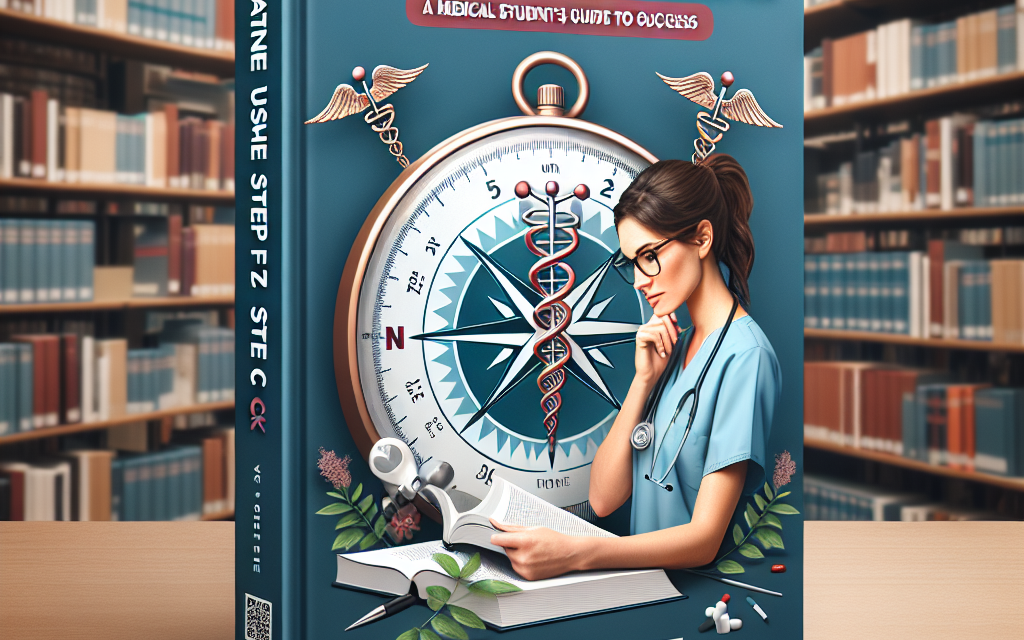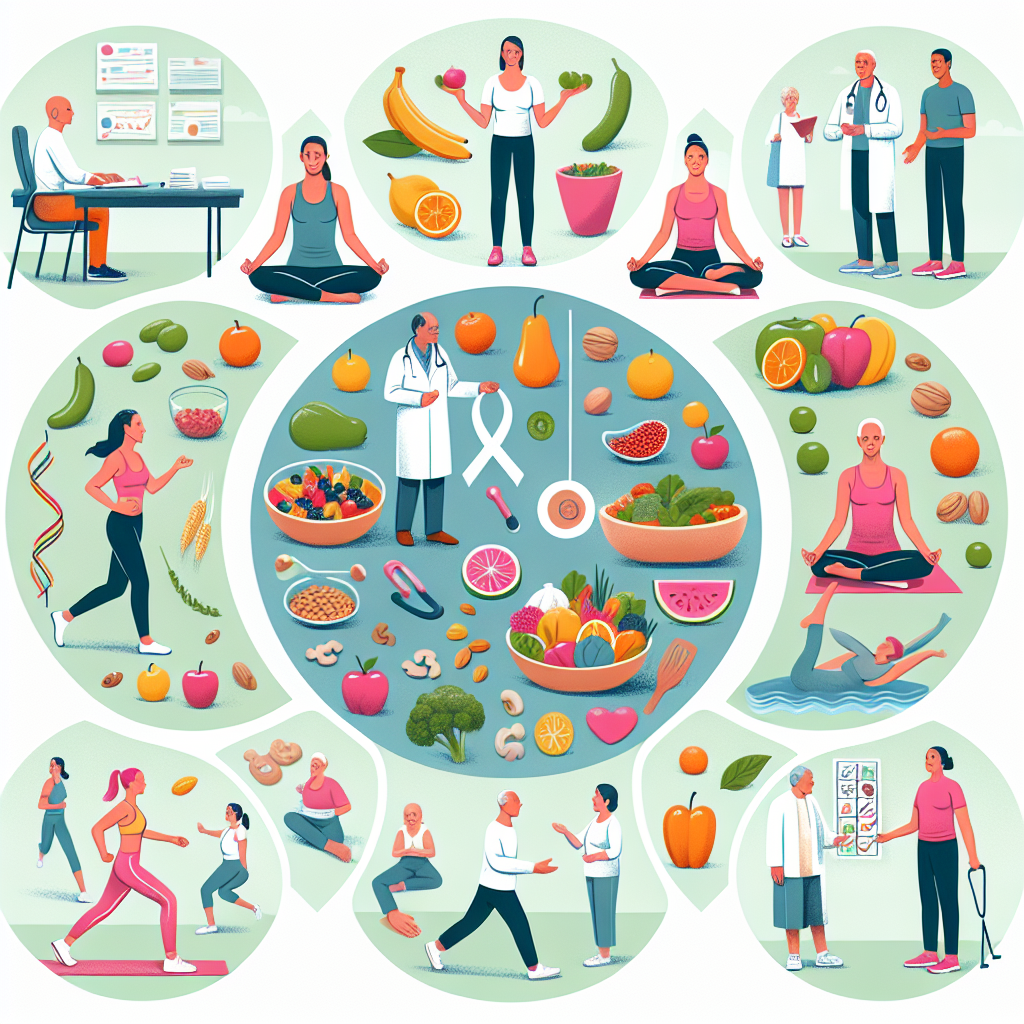Navigating USMLE Step 2 CK: A Medical Student’s Guide to Success

The United States Medical Licensing Examination (USMLE) Step 2 Clinical Knowledge (CK) is a pivotal milestone in the journey of a medical student. It assesses the medical knowledge and clinical skills necessary to provide patient care under supervision. This exam is crucial for residency applications and can significantly impact a medical student’s career trajectory. This guide aims to provide a comprehensive roadmap to help medical students navigate the complexities of USMLE Step 2 CK successfully.
Understanding the Structure and Content of USMLE Step 2 CK
Before diving into preparation strategies, it’s essential to understand the structure and content of the USMLE Step 2 CK. This section will explore the exam’s format, the types of questions you can expect, and the subjects covered.
Exam Format and Timing
The USMLE Step 2 CK is a one-day examination divided into eight 60-minute blocks administered over a nine-hour testing session. Each block contains up to 40 questions, with a total of approximately 318 questions. The exam is designed to test your ability to apply medical knowledge in a clinical setting.
Time management is crucial during the exam. You will have a total of 45 minutes of break time, which can be used between blocks. Efficiently managing this time is essential to maintain focus and stamina throughout the day.
Question Types and Subjects
The questions on Step 2 CK are primarily multiple-choice, with some items requiring interpretation of clinical data, such as laboratory results, imaging studies, and patient histories. The exam covers a wide range of subjects, including:
- Internal Medicine
- Surgery
- Pediatrics
- Obstetrics and Gynecology
- Psychiatry
- Preventive Medicine
Each subject is tested in the context of patient care, requiring you to integrate knowledge from various disciplines to solve clinical problems.
Clinical Vignettes and Patient Scenarios
A significant portion of the exam consists of clinical vignettes, which present a patient scenario followed by a series of questions. These vignettes test your ability to synthesize information, make differential diagnoses, and determine appropriate management plans.
For example, you might be presented with a case of a 45-year-old male with chest pain. You would need to consider the patient’s history, physical examination findings, and diagnostic test results to arrive at a diagnosis and treatment plan.
Scoring and Performance Interpretation
The USMLE Step 2 CK is scored on a scale of 1 to 300, with a passing score typically around 209-211. However, competitive residency programs often look for scores well above the passing threshold. Understanding the scoring system can help you set realistic goals and measure your progress during preparation.
Performance is reported in two ways: a three-digit score and a pass/fail status. The three-digit score is used by residency programs to compare applicants, while the pass/fail status indicates whether you have met the minimum competency required to practice medicine.
Importance of Step 2 CK in Residency Applications
Step 2 CK scores play a crucial role in residency applications. Many programs use these scores as a screening tool to select candidates for interviews. A strong performance can enhance your application, especially if your Step 1 score was not as competitive as you hoped.
In recent years, the emphasis on Step 2 CK has increased, as it is seen as a better predictor of clinical performance during residency. Therefore, dedicating time and effort to excel in this exam is a worthwhile investment in your future medical career.
Effective Study Strategies for USMLE Step 2 CK
Preparing for the USMLE Step 2 CK requires a strategic approach to studying. This section will outline effective study strategies, including resource selection, study schedules, and practice exams.
Choosing the Right Study Resources
With a plethora of study resources available, selecting the right ones can be overwhelming. It’s essential to choose resources that align with your learning style and provide comprehensive coverage of the exam content.
- Books: Popular choices include “First Aid for the USMLE Step 2 CK,” “Master the Boards USMLE Step 2 CK,” and “Step-Up to Medicine.” These books offer concise summaries and high-yield information.
- Question Banks: UWorld is widely regarded as the gold standard for Step 2 CK preparation. It offers a vast array of practice questions that mimic the style and difficulty of the actual exam.
- Online Courses: Online platforms like Kaplan and OnlineMedEd provide video lectures and interactive content to reinforce key concepts.
It’s advisable to use a combination of these resources to ensure a well-rounded preparation.
Creating a Study Schedule
A well-structured study schedule is crucial for effective preparation. Start by assessing how much time you have before your exam date and allocate study blocks accordingly. Consider your strengths and weaknesses in different subjects and adjust your schedule to focus more on areas that need improvement.
For example, if you have three months to prepare, you might dedicate the first month to reviewing core subjects, the second month to practice questions and mock exams, and the final month to revising weak areas and consolidating knowledge.
Active Learning Techniques
Active learning techniques can enhance retention and understanding of complex medical concepts. These techniques include:
- Spaced Repetition: Use flashcards or apps like Anki to review information at spaced intervals, reinforcing memory retention.
- Practice Questions: Regularly practice questions to apply knowledge and identify areas for improvement.
- Peer Teaching: Explaining concepts to peers can solidify your understanding and highlight gaps in your knowledge.
Incorporating these techniques into your study routine can make your preparation more efficient and effective.
Simulating Exam Conditions
Simulating exam conditions is an essential part of preparation. Take full-length practice exams under timed conditions to get accustomed to the exam’s pace and pressure. This practice will help you develop time management skills and build confidence for the actual test day.
Analyze your performance on practice exams to identify patterns in your mistakes. Focus on understanding why you got certain questions wrong and how you can avoid similar errors in the future.
Balancing Study with Self-Care
While rigorous study is necessary, it’s equally important to maintain a healthy balance between study and self-care. Burnout can negatively impact your performance, so prioritize activities that promote well-being, such as:
- Regular exercise to reduce stress and improve concentration.
- Adequate sleep to enhance memory consolidation and cognitive function.
- Mindfulness practices, such as meditation or yoga, to improve focus and reduce anxiety.
Remember that taking care of your physical and mental health is an integral part of successful exam preparation.
Mastering Clinical Vignettes and Patient Scenarios
Clinical vignettes and patient scenarios are a significant component of the USMLE Step 2 CK. This section will provide strategies for mastering these types of questions, including approaches to differential diagnosis and management plans.
Approaching Clinical Vignettes
Clinical vignettes require a systematic approach to extract relevant information and make informed decisions. Start by carefully reading the vignette to identify key details, such as the patient’s age, gender, presenting symptoms, and medical history.
Next, consider the most likely diagnosis based on the information provided. Use your knowledge of common presentations and disease patterns to narrow down the possibilities. For example, if a vignette describes a young woman with fatigue, weight gain, and cold intolerance, hypothyroidism should be high on your differential diagnosis list.
Developing Differential Diagnoses
Developing a comprehensive differential diagnosis is crucial for answering questions accurately. Consider the following steps:
- List Possible Diagnoses: Based on the vignette, list all potential diagnoses that fit the clinical presentation.
- Prioritize Diagnoses: Rank the diagnoses based on likelihood, considering factors such as prevalence, risk factors, and clinical features.
- Rule Out Alternatives: Use additional information from the vignette, such as laboratory results or imaging findings, to rule out less likely diagnoses.
This systematic approach will help you arrive at the most probable diagnosis and answer questions with confidence.
Formulating Management Plans
Once you’ve identified the likely diagnosis, the next step is to formulate an appropriate management plan. Consider the following aspects:
- Immediate Interventions: Identify any urgent interventions required to stabilize the patient, such as administering oxygen or starting intravenous fluids.
- Definitive Treatment: Determine the most effective treatment for the underlying condition, such as antibiotics for bacterial infections or surgery for appendicitis.
- Follow-Up Care: Consider any necessary follow-up care, including monitoring for complications or scheduling follow-up appointments.
Understanding the principles of patient management will enable you to answer questions related to treatment plans accurately.
Interpreting Diagnostic Tests
Many clinical vignettes include diagnostic test results that require interpretation. Familiarize yourself with common laboratory values, imaging findings, and their clinical significance. For example, elevated troponin levels in a patient with chest pain suggest myocardial infarction.
Practice interpreting diagnostic tests by reviewing case studies and practice questions. This skill is essential for making informed clinical decisions and answering questions accurately.
Utilizing Clinical Guidelines
Clinical guidelines provide evidence-based recommendations for diagnosing and managing various medical conditions. Familiarize yourself with guidelines from reputable organizations, such as the American College of Cardiology or the American Diabetes Association.
Understanding these guidelines will help you answer questions related to best practices and standard care protocols. Additionally, staying updated on recent guideline changes can give you an edge in answering questions accurately.
Leveraging Practice Exams and Question Banks
Practice exams and question banks are invaluable tools for USMLE Step 2 CK preparation. This section will explore how to effectively use these resources to enhance your performance on the exam.
The Role of Practice Exams
Practice exams serve multiple purposes in your preparation journey. They help you assess your knowledge, identify areas for improvement, and build test-taking stamina. Consider taking practice exams at regular intervals to track your progress and adjust your study plan accordingly.
When reviewing practice exams, focus on understanding the rationale behind each question and answer choice. This analysis will help you identify patterns in your mistakes and develop strategies to avoid similar errors in the future.
Maximizing Question Bank Usage
Question banks, such as UWorld, are essential for familiarizing yourself with the exam format and question style. Use question banks to practice answering questions under timed conditions, simulating the pressure of the actual exam.
When using question banks, consider the following strategies:
- Active Learning: Actively engage with each question by reasoning through the answer choices and explaining your thought process.
- Review Explanations: Carefully review the explanations for both correct and incorrect answers to reinforce your understanding of key concepts.
- Track Progress: Use question bank analytics to track your performance and identify areas that require further review.
Consistent practice with question banks will enhance your test-taking skills and boost your confidence for the exam day.
Simulating Exam Conditions
Simulating exam conditions is crucial for building test-taking stamina and confidence. Set aside dedicated time to take full-length practice exams under timed conditions. This practice will help you develop time management skills and get accustomed to the exam’s pace.
During practice exams, focus on maintaining a steady pace and avoiding spending too much time on challenging questions. If you’re unsure about a question, make an educated guess and move on to maximize your time for other questions.
Analyzing Performance and Identifying Weaknesses
After completing practice exams, take the time to analyze your performance and identify areas for improvement. Consider the following steps:
- Review Mistakes: Carefully review questions you answered incorrectly and understand why you made those mistakes.
- Identify Patterns: Look for patterns in your mistakes, such as specific subjects or question types that consistently challenge you.
- Adjust Study Plan: Use your analysis to adjust your study plan, focusing more on areas that need improvement.
This reflective process will help you refine your preparation strategy and enhance your performance on the actual exam.
Building Test-Taking Confidence
Building test-taking confidence is essential for success on the USMLE Step 2 CK. Practice exams and question banks provide opportunities to develop this confidence by familiarizing yourself with the exam format and question style.
As you progress in your preparation, you’ll notice improvements in your ability to answer questions accurately and efficiently. This increased confidence will translate into a more positive mindset on the exam day, reducing anxiety and enhancing your performance.
Test Day Strategies and Tips for Success
The day of the USMLE Step 2 CK is a culmination of months of preparation. This section will provide strategies and tips to help you navigate the exam day with confidence and achieve success.
Preparing for Test Day
Preparation for test day begins well before the actual exam. Consider the following steps to ensure you’re ready:
- Know the Logistics: Familiarize yourself with the test center location, parking options, and check-in procedures to avoid any last-minute stress.
- Pack Essentials: Prepare a bag with essential items, such as your identification, scheduling permit, snacks, and water.
- Plan Your Route: Plan your route to the test center and allow extra time for unexpected delays.
Being well-prepared will help you start the exam day with a calm and focused mindset.
Managing Exam Day Stress
Exam day stress is natural, but managing it effectively is crucial for optimal performance. Consider the following strategies:
- Practice Relaxation Techniques: Use deep breathing exercises or mindfulness techniques to calm your nerves before and during the exam.
- Stay Positive: Focus on positive affirmations and remind yourself of your preparation and capabilities.
- Take Breaks: Use your break time wisely to rest, hydrate, and refuel with snacks.
Managing stress will help you maintain focus and clarity throughout the exam.
Time Management During the Exam
Effective time management is crucial for completing all questions within the allotted time. Consider the following tips:
- Pace Yourself: Aim to spend approximately 1-1.5 minutes per question, adjusting as needed based on question difficulty.
- Flag Questions: If you’re unsure about a question, flag it for review and move on to maximize your time for other questions.
- Avoid Overthinking: Trust your instincts and avoid overanalyzing questions, which can lead to second-guessing and wasted time.
Practicing time management during practice exams will help you develop a strategy that works for you on the actual exam day.
Handling Challenging Questions
Encountering challenging questions is inevitable, but handling them effectively is key to success. Consider the following strategies:
- Stay Calm: Remain calm and composed when faced with difficult questions, and avoid letting them affect your confidence.
- Use Process of Elimination: Eliminate obviously incorrect answer choices to narrow down your options.
- Make Educated Guesses: If you’re unsure about a question, make an educated guess based on your knowledge and move on.
Remember that it’s normal to encounter challenging questions, and your ability to handle them effectively will contribute to your overall success.
Post-Exam Reflection and Next Steps
After completing the exam, take time to reflect on your performance and consider the next steps in your medical journey. Consider the following:
- Reflect on Your Experience: Reflect on your exam experience, noting any areas where you felt confident or challenged.
- Plan for the Future: Consider your next steps, whether it’s preparing for residency applications or focusing on other aspects of your medical education.
- Celebrate Your Accomplishment: Regardless of the outcome, celebrate the hard work and dedication you put into preparing for the exam.
This reflection will help you gain valuable insights and set the stage for future success in your medical career.
Conclusion
Navigating the USMLE Step 2 CK is a challenging yet rewarding journey that requires dedication, strategic planning, and effective study techniques. By understanding the exam’s structure, mastering clinical vignettes, leveraging practice exams, and implementing test day strategies, you can enhance your performance and achieve success.
Remember that preparation is a marathon, not a sprint. Stay focused, maintain a positive mindset, and prioritize self-care throughout your preparation. With determination and perseverance, you can conquer the USMLE Step 2 CK and take a significant step forward in your medical career.





